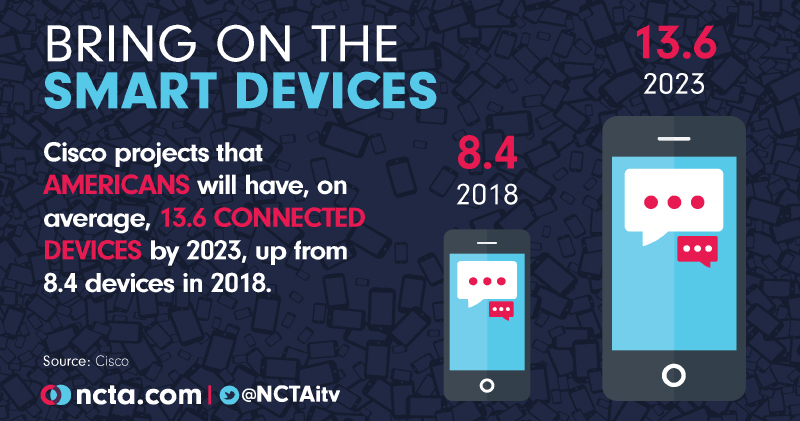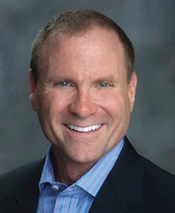Meeting the Needs of Intelligent Communities Requires Smart, New Approaches
By Douglas Guthrie
For the better part of 50 years, cable providers have been delivering for our customers. We have been offering compelling entertainment content, providing unsurpassed wired and wireless connectivity, and making available a growing array of advanced applications. Our customers count on us to provide reliable connectivity, to enable innovative and cost-effective products and solutions, and to stand behind and support our offerings.
In recent years, a new kind of customer has emerged. These customers are real estate developers, sports franchises, stadium owners, and municipalities. Most often these new customers seek more than just connectivity and access to a menu of existing products. Instead, the new “Smart Community” or “Intelligent Community” customers require solutions that can meet their evolving needs and a partner that can work collaboratively to deploy, leverage, and support networks of connected devices.

The explosive growth of connected devices creates opportunities and challenges
According to Cisco’s annual Internet Report, there were 2.7 billion networked devices in the U.S. as of 2018. Cisco forecasts that there will be 4.6 billion connected devices in the U.S. by the year 2023 and that the average American will possess 13.6 connected devices. The explosive growth of connected devices creates new challenges and opportunities for customers and cable providers alike.
There is a tremendous opportunity for these new customers to capitalize on this connected device network (sometimes referred to as the Internet of Things or “IoT” network). While the challenges they seek to address are often complex, simple and creative solutions can help the customer realize additional revenue, significantly lower operating costs, and even provide new high-value products and services. For example, property owners of multiple-dwelling units (MDUs) who deploy the right technology can increase rents by as much as 20% for smart apartments while reducing energy costs by 10% – 25%.
With a growing universe of IoT applications and solutions, it can be challenging to determine what product or solution is right for an organization. Customers must navigate a complex and fragmented market to identify which solutions are sufficiently reliable and robust enough to meet their current and future needs.
Cable providers are uniquely positioned to pursue these opportunities by building high-speed, high-capacity networks that enable best-in-class solutions for our customers today, without having to wait for 5G deployment. When built right, these robust networks can support emerging applications and technology, providing connectivity that will be relevant for decades to come. Because cable companies are laying the foundation to smart networks, we can think holistically and advise customers on how to create an integrated system of smart solutions. In order to effectively engage in the smart space, cable providers must collaborate across business units to deliver seamless solutions to complex opportunities. Solutions built for MDUs, small-medium businesses (SMB), and enterprises can be customized to meet the growing needs of mixed-use campuses and municipalities.
Delivering smart results in an evolving market
At Comcast, we are working across business units to meet these new demands by providing the necessary connectivity, identifying and solving for evolving challenges, and providing solutions that save money for our customers. The project details below illustrate how Comcast has adopted to deliver innovative results for our customers.
Principle #1:
At the core of an effective Smart Community project is robust and reliable connectivity.
The Battery Atlanta. The network is The Battery Atlanta. At the Atlanta Braves’ Truist Park and The Battery — the surrounding 1.5 million square feet of mixed-use development — Comcast Business installed and operates an all-fiber network providing video, voice, and high-speed Internet connectivity. The network is driven by 100 gigabit per second (Gbps) Ethernet lines, 250 miles of fiber optic cable and more than 1000 Wi-Fi access points in and outside of the park. The network supports the development’s LED lighting, sprinklers and HVAC systems, the ballpark’s security system, interactive kiosks, over 1,000 screens and Wi-Fi for thousands of fans’ smart devices, as well as a parking and traffic management app.
Despite all of this, the customer is still just beginning to tap into the full capacity of the network. It also has the ability to support future technology, such as LoRa devices, giving the customer a network infrastructure that is virtually “future-proof.” The Atlanta Braves organization is now free to imagine new ways to leverage the connected device network.
“More than ever, we need a communications infrastructure across multiple sites that would give us fast, reliable communications and more than enough capacity to accommodate a host of emerging technology applications.”
— Atlanta Braves President of Development Mike Plant.
Principle #2:
Smart Community projects, particularly those that include municipal partners, should directly address pain points and require minimal upfront hardware investment.
Project Green Light. In early 2016, the Detroit Police Department launched an innovative crime-fighting partnership called Project Green Light Detroit. The initiative installed real-time camera connections at eight gas stations, providing police with access to live feeds from any camera in the vicinity of an emergency 911 call. To help expand Project Green Light, the City of Detroit commissioned Comcast Business to create a customized version of an existing video monitoring system that the company had developed for its SMB market. The system allows business owners participating in Project Green Light to record, store, and share video footage with the Detroit Police Department. Comcast provides leasing options that reduce upfront costs and include service and support for the equipment, allowing more local business owners to participate. The project now has 160 participating small businesses and has reduced incidents of violent crime by 48% at the original eight locations and 23% overall since 2015.
“Comcast Business has enabled us to both improve and expand Project Green Light offerings, which has made the initiative more accessible to a growing number of area businesses.”
— Detroit Mayor Mike Duggan.
Principle #3:
A demonstrable and rapid return-on-investment (ROI) is a critical success factor for Smart Community projects.
The Wyatt in Fort Collins. Comcast’s Xfinity Smart Communities has partnered with The Wyatt, an apartment complex in Fort Collins, Colorado, where in each of the 368 units, tenants can control their door locks, lights, and thermostats via the Xfinity Smart Communities app. The property managers also use the Smart Communities app to transfer control of apartments to new tenants and to simplify daily management tasks including checking temperature set-points in common areas and vacant units and monitoring for water leaks. The Smart Communities application allows for these tasks to be accomplished more simply and remotely, helping the property reduce utility expenses and better manage employee resources and time. Comcast plans to connect even more smart home devices to the Smart Communities app in the future, but the initial suite of locks, lighting and thermostats has had the desired effect. Both the residents and property owners have recognized the value of the amenity.
“When I selected The Wyatt FOCO for my residence, it was the unique amenity package that set it apart from other communities in the area. The ability to remotely control my unit from an app offers a greater sense of comfort and knowing that the Internet can handle both my work-from-home and study needs, as well as stream content without a glitch was an added benefit.”
— Jack Waldon, resident at the Wyatt FOCO.
Cable companies should lead the way
The smart city market is projected to be in the hundreds of billions of dollars in the next five years. With the industry still in its infancy and with no dominant players, cable companies have an opportunity to build upon the connectivity networks foundation that they have built for decades. By collaborating across internal business units to create best practices and streamline solutions, while focusing on the fundamentals — providing robust and secure connectivity, addressing tangible, user pain points, and demonstrating a path to quick ROI — cable providers are uniquely positioned to offer the kinds of forward-thinking, comprehensive smart solutions that customers across all sectors are seeking.
- See https://www.cisco.com/c/en/us/solutions/executive-perspectives/annual-internet-report/air-highlights.html
- Stratis Pitch Deck 2018
- EY Global Market Outlook, Trends in Real Estate Private Equity

Douglas Guthrie,
Senior Vice President,
Comcast Cable
Douglas Guthrie serves as a Senior Vice President at Comcast Cable, leading go to market strategy and investments into Smart Cities and Rural Broadband. In this role, he leads a team responsible for evaluating opportunities to determine market level needs for investments and products that provide solutions in our communities and long-term value for our shareholders. Doug has over 34 years of experience in the communications industry, holding a variety of senior management, operations and marketing positions with Comcast and its predecessor companies, including AT&T Broadband, MediaOne and Continental Cablevision, where he began his career in Massachusetts in 1985.
Shutterstock



